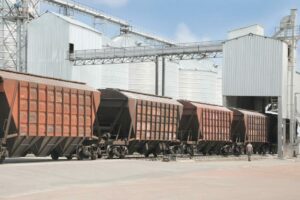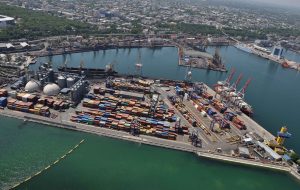Ports of Great Odesa and the Danube: statistics and prospects of agricultural exports from Ukraine

Photo: Grain Ukraine Conference
The lion’s share of Ukrainian agricultural products is exported through the “grain corridor”.
Approximately 50% of the total export takes place through the deep-sea ports of the Odesa region.
During the Grain Ukraine conference, the Deputy Minister of Infrastructure of Ukraine, Yuriy Vaskov, said that in 2022, cargo turnover for import and export via sea routes amounted to 26%, while in the Danube ports – 12%.
“But I would like to remind you that last year is not completely indicative, as the ports worked in the traditional format for almost 2 months. Then logistics reoriented to forced alternative ways. If we talk about today, the Danube region is more than 20% of the turnover of goods, and accordingly it is more than 20% participation in the functioning of the economy of Ukraine,” Yuriy Vaskov stressed.
As of today, during the operation of the “grain corridor”, 50% of the export of agricultural products goes through sea routes, 25% – through the western borders (road transport and railway) and another 25% – through the ports of the Danube.
During the entire period of operation of the “grain corridor”, 950 ships entered and exited. Currently, there are problems with the functioning of sea routes. According to the results of May 2023, less than 1.3 million tons of grain exports are expected. The maximum indicators were recorded in October of this year — 4.3 million tons. From November until today, the Russian Federation has been blocking the normal operation of the Grain Agreement.
Read also: Blockade of Ukrainian ports and other challenges.
At the same time, about 20 million tons of cargo traffic is expected from the Danube ports this year. Before the start of the full-scale war, the participation of these ports in the economy of Ukraine was only 1.5%.
“Prospects for the development of ports on the Danube became possible thanks to our Armed Forces, the opening of the mouth of Bystre after the liberation of Zmiiny Island. When only the Romanian Sulina canal was used, there were months-long queues waiting to pass through the canal,” the deputy minister recalled.
Read also: How Ukrainian ports on the Danube changed during the year of the war.
Thanks to the mouth of Bystre, it is possible to pass up to 70% of ships, in this case there is no need to wait for passage through the Sulina channel. But at the moment there are questions and problems on the way out, since the loading of ships with a draft of more than 7 meters is forced to use the Sulina channel. This creates some downtime.
As previously reported by USM, Ukraine will begin dredging the Bystre estuary. There are plans to increase the draft of ships at the estuary of the Danube to 7.2 m.





